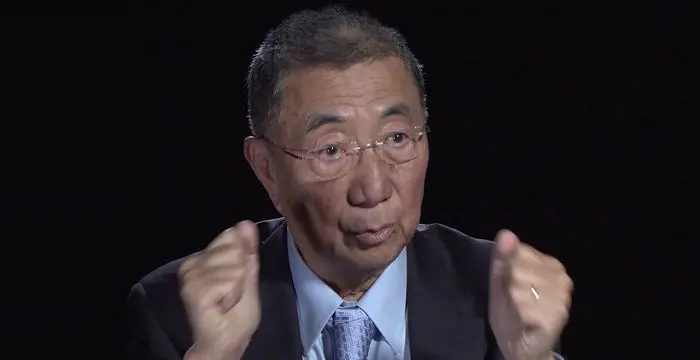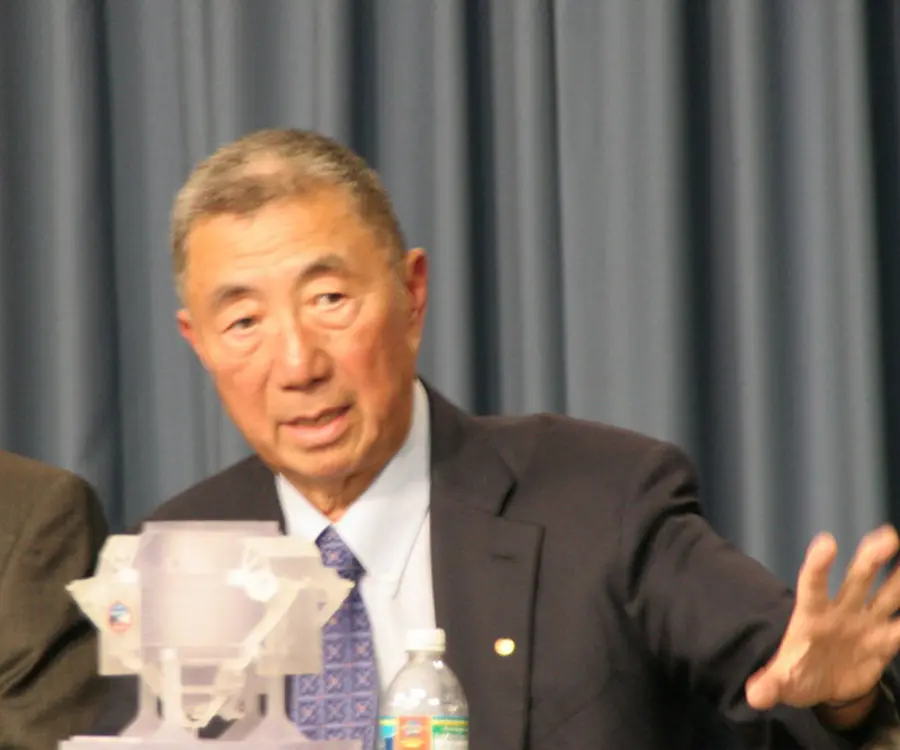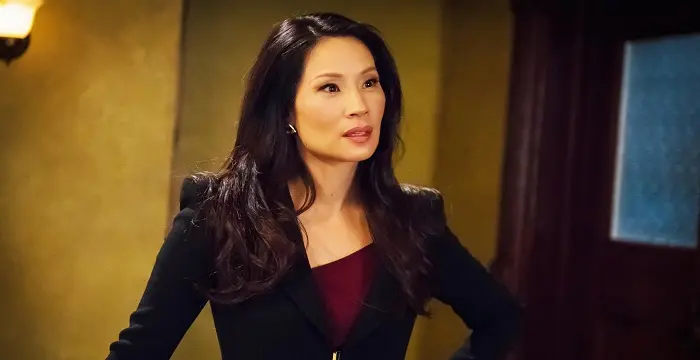
Samuel C. C. Ting - University Of Michigan, Family and Childhood
Samuel C. C. Ting's Personal Details
Samuel Chao Chung Ting is an American physicist of Chinese ethnicity who won the Nobel Prize for his discovery of ‘J’ particle
| Information | Detail |
|---|---|
| Birthday | January 7, 1936 |
| Nationality | American |
| Famous | University Of Michigan, Scientists, Physicists |
| Spouses | Kay Kuhne, Susan Carol Marks |
| Known as | Samuel Chao Chung Ting |
| Childrens | Amy Ting, Christopher, Jeanne Ting Chowning |
| Universities |
|
| Notable Alumnis |
|
| Birth Place | Ann Arbor, Michigan, United States |
| Gender | Male |
| Father | Kuan-hai Ting |
| Mother | Tsun-ying Jeanne Wang |
| Sun Sign | Capricorn |
| Born in | Ann Arbor, Michigan, United States |
| Famous as | Physicist |
// Famous Scientists
Juliane Koepcke
Juliane Koepcke is a German-Peruvian biologist, who was the lone survivor among the 92 passengers and crew of the ill-fated LANSA Flight 508 that crashed in the Peruvian rainforest on 24 December 1971. Know more about her life in this biography.
Henry Cavendish
Henry Cavendish was a theoretical chemist and physicist, renowned for discovery of hydrogen and calculation of the mass of earth. To know more about his childhood, profile, timeline and career read on
Konstantin Tsiolkovsky
Konstantin Tsiolkovsky was a Russian rocket scientist and a pioneer of astronautics. This biography provides detailed information about his childhood, family, personal life, career, achievements, etc.
Samuel C. C. Ting's photo
Who is Samuel C. C. Ting?
Samuel Chao Chung Ting is an American physicist of Chinese ethnicity who won the Nobel Prize for his discovery of ‘J’ particle. His parents, who were university professors in China, had come to the U.S. on a visit, intending to return home before his birth. But he was born premature and thus became an American citizen by accident. Soon after that, the Tings went back to China, where they stayed until he was twelve and then shifted to Taiwan. When Ting turned twenty, he moved to the U.S with $100 in hand and little or no knowledge of English. Here he managed to enroll at University of Michigan on full scholarship. After receiving his PhD, he began his career as a Ford Foundation Fellow at CERN in Geneva and then taught for few years at Columbia University. His work, which earned him the Nobel Prize in Physics, was started at DESY, Hamburg, but was concluded at Brookhaven National Laboratory, New York City. Concurrently, he worked as a professor at MIT. Mounting of Alpha Magnetic Spectrometer on the International Space Station is another feather in his cap; the project was completed entirely under his direction.
// Famous Physicists
Henry Cavendish
Henry Cavendish was a theoretical chemist and physicist, renowned for discovery of hydrogen and calculation of the mass of earth. To know more about his childhood, profile, timeline and career read on
Walter Kohn
Nobel Laureate Walter Kohn was an Austrian-born American theoretical chemist and physicist. Check out this biography to know about his childhood, life, achievements, works & timeline.
Nikola Tesla
Nikola Tesla was a Serbian-American inventor, best known for his development of alternating current electrical systems. This biography of Nikola Tesla provides detailed information about his childhood, life, achievements, works & timeline.
Childhood & Early Life
Samuel Chao Chung Ting was born on January 27, 1936, in Ann Arbor, Michigan, United States. His father, Kuan-hai Ting, was a professor of engineering and his mother, Tsun-ying Jeanne Wang was a professor of psychology. He was the eldest of their three children.
Originally from Rizhao Country, Shandong province, China, his parents met and married as graduate students at the University of Michigan. They were settled in Rizhao but months before Samuel’s birth, they came to the United States on a short visit, hoping to get back to China before their son was born.
However, Samuel was born before time and since his parents were still at Michigan he became an American citizen by birth. Two months later, the family returned to China, where he was mostly raised by his maternal grandmother, who had singlehandedly raised his mother.
Very soon, China was invaded by Japan and the situation became so volatile that Samuel had to be educated at home. Later, as the Chinese Civil war set in, the situation turned worse and the family fled to Taiwan, where in 1948, Samuel was sent to a school for the first time.
After graduating from school, Samuel first entered National Cheng Kung University but after one year, decided to go to the United States of America for higher education. Accordingly, on 6 September 1956, he landed at Detroit with just $100 in hand.
Subsequently, he enrolled at the University of Michigan with full scholarship. In 1959, he earned his bachelor’s degree in mathematics and physics. Later in 1960, he earned MS degree with physics and then working under L.W. Jones and M.L. Perl, he earned his PhD in 1962 from the same university.
Career
In 1963, shortly after receiving his PhD, Samuel C. C. Ting received a Ford Foundation fellowship and with that he joined European Organization for Nuclear Research (CERN) at Geneva, Switzerland. There he worked with Giuseppe Cocconi at the Proton Synchrotron, a key component in CERN’s accelerator complex.
At the Synchrotron, protons from the Proton Synchrotron Booster or heavy ions from the Low Energy Ion Ring were accelerated. Working under Cocconi, he was able to get a more in-depth knowledge about the subject.
In the spring of 1965, he returned to the U.S.A and joined the Columbia University, New York as an instructor in Physics. Here he came in close contact with eminent scientists like L. Lederman, T.D. Lee, I.I. Rabi, M. Schwarts, J. Steinberger, C.S. Wu etc and greatly benefited from such associations.
In the following year, an experiment on electron-positron pair production by photon collision with a nuclear target was carried on at the Cambridge Electron Accelerator, Harvard University. It occurred to Ting that the result of the experiment violated the accepted theories of quantum electrodynamics. Therefore, he began studying it in detail.
Subsequently, he wrote to G. Weber and W. Jentschke of the Deutsches Elektronen Synchrotron (DESY), proposing to undertake a pair production experiment there. Once his proposal was accepted, he took leave from Columbia University and set out for Hamburg in March 1966.
At Hamburg, Ting organized his own group and began working on the pair production experiment. He first constructed a double-arm spectrometer and using it, Ting was able to study the physics of electron pairs, particularly the way such pairs are created during the decay of photon-like particles.
In 1967, he went back to the U.S.A. and joined Massachusetts Institute of Technology (MIT) as Assistant Professor of Physics. Two years later, in 1969, he was promoted to the post of full professor.
In 1971, he brought his team to America and continued the experiment at Brookhaven National Laboratory, Long Island, New York. Here, he designed a more advanced version of double-arm spectrometer, capable of using higher energy proton beam.
Finally in August 1974, they found the evidence of a new kind of heavy particle and called it ‘J’ particle. Two years later, he jointly received the Nobel Prize in Physics for this work.
In 1977, Ting was appointed the first Thomas Dudley Cabot Institute Professor of Physics at MIT. He now continued his search for new subatomic particles and began to get better scope for involving himself in large-scale, expensive experiments, both in the U.S.A and abroad.
In 1995, he proposed that a space-borne cosmic-ray detector, later called Alpha Magnetic Spectrometer, be mounted on the International Space Station. The proposal was not only accepted, but he was also selected as the principal investigator.
The project was $1.5 billion undertaking and involved 500 scientists from 56 institutions and 16 countries. In 1998, they flew and tested a prototype on Space Shuttle mission STS-91. It was christened AMS-01.
Finally, on May 16 2001, AMS-02 was successfully launched on Shuttle mission STS-134. It was installed on the International Space Station on 19 May 2011. In this mission, Ting was not only in charge of fabricating this sensitive detector module, but has been directing it since then.
Major Work
Ting is best known for the discovery of ‘J’ particle. In August 1974, while working in the Brookhaven National Laboratory, Ting and his team members obtained an unusual reading, which diverged from the then-current atomic theory. He believed that it indicated presence of an unknown high mass particle.
He then sent the data to his colleague, Giorgio Bellettini, who was also director of Italy's Frascati Laboratory. He confirmed that Ting had discovered a new elementary particle, which was three times heavier than a proton and had a narrow range of energy states, a longer life span than anything known in physics.
In November, they jointly presented their findings in Physical Review Letters. Since the work involved electromagnetic currents bearing the symbol ‘j’, they called it ‘j-particle’. Soon after this, they were notified that Stanford University physicist Burton Richter had also proved the existence of a new particle; but he had named it the ‘psi particle’.
Subsequently, Ting and Richter compared their results and realized that they had independently discovered the same particle. Now, the particle is referred as the j/psi particle. The experiment proved the existence of a fourth fundamental subatomic particle called ‘charm’.
Awards & Achievements
In 1976, Samuel C. C. Ting received the Nobel Prize in Physics jointly with Burton Richter "for their pioneering work in the discovery of a heavy elementary particle of a new kind".
In addition to that, he has received numerous other awards from all over the world including Ernest Orlando Lawrence Award (1975), Eringen Medal (1977) and De Gasperi Award (1988). He is also a member of many national and foreign societies and has received honorary degrees from many renowned universities.
Personal Life
In 1960, Samuel Ting married Kay Louise Kuhne. He has two daughters, Jeanne and Amy, from this union. The marriage later ended in a divorce.
In 1985, Ting married Dr. Susan Carol Marks. They have a son, Christopher.
Trivia
Ting named the particle he discovered as ‘j’ particle mainly because the work involved electromagnetic currents, which is symbolized by the letter ‘j’. At the same time, Chinese character representing the word ‘Ting’ also looks something like the English letter ‘J'.
Although many Chinese have earlier received the Nobel Prize, Ting is the first person to give the Nobel banquet speech in Mandarin.
// Famous University Of Michigan
Lucy Liu
Lucy Alexis Liu is an American actress, model and an occasional film producer. This biography profiles her childhood, early life, career, major works, awards, achievements, personal life, legacy and timeline.
Ted Kaczynski
Ted Kaczynski is an infamous criminal who became known for a campaign of letter bombs he sent by the name ‘Unabomber’. Check out this biography to know about his childhood, family life, achievements and fun facts about him.
Larry Page
Larry Page is the co-founder of search engine Google. This biography of Larry Page provides detailed information about his life, achievements, works & timeline.
Samuel C. C. Ting's awards
| Year | Name | Award |
|---|---|---|
Other | ||
| 0 | Ernest Orlando Lawrence Award (1975) | |
| 0 | Nobel Prize for Physics (1976) | |
| 0 | Eringen Medal (1977) | |
| 0 | De Gasperi Award (1988) | |
Samuel C. C. Ting biography timelines
- // 27th Jan 1936Samuel Chao Chung Ting was born on January 27, 1936, in Ann Arbor, Michigan, United States. His father, Kuan-hai Ting, was a professor of engineering and his mother, Tsun-ying Jeanne Wang was a professor of psychology. He was the eldest of their three children.
- // 1948Very soon, China was invaded by Japan and the situation became so volatile that Samuel had to be educated at home. Later, as the Chinese Civil war set in, the situation turned worse and the family fled to Taiwan, where in 1948, Samuel was sent to a school for the first time.
- // 6th Sep 1956After graduating from school, Samuel first entered National Cheng Kung University but after one year, decided to go to the United States of America for higher education. Accordingly, on 6 September 1956, he landed at Detroit with just $100 in hand.
- // 1960In 1960, Samuel Ting married Kay Louise Kuhne. He has two daughters, Jeanne and Amy, from this union. The marriage later ended in a divorce.
- // 1963In 1963, shortly after receiving his PhD, Samuel C. C. Ting received a Ford Foundation fellowship and with that he joined European Organization for Nuclear Research (CERN) at Geneva, Switzerland. There he worked with Giuseppe Cocconi at the Proton Synchrotron, a key component in CERN’s accelerator complex.
- // 1965In the spring of 1965, he returned to the U.S.A and joined the Columbia University, New York as an instructor in Physics. Here he came in close contact with eminent scientists like L. Lederman, T.D. Lee, I.I. Rabi, M. Schwarts, J. Steinberger, C.S. Wu etc and greatly benefited from such associations.
- // Mar 1966Subsequently, he wrote to G. Weber and W. Jentschke of the Deutsches Elektronen Synchrotron (DESY), proposing to undertake a pair production experiment there. Once his proposal was accepted, he took leave from Columbia University and set out for Hamburg in March 1966.
- // 1967 To 1969In 1967, he went back to the U.S.A. and joined Massachusetts Institute of Technology (MIT) as Assistant Professor of Physics. Two years later, in 1969, he was promoted to the post of full professor.
- // 1971In 1971, he brought his team to America and continued the experiment at Brookhaven National Laboratory, Long Island, New York. Here, he designed a more advanced version of double-arm spectrometer, capable of using higher energy proton beam.
- // Aug 1974Finally in August 1974, they found the evidence of a new kind of heavy particle and called it ‘J’ particle. Two years later, he jointly received the Nobel Prize in Physics for this work.
- // Aug 1974Ting is best known for the discovery of ‘J’ particle. In August 1974, while working in the Brookhaven National Laboratory, Ting and his team members obtained an unusual reading, which diverged from the then-current atomic theory. He believed that it indicated presence of an unknown high mass particle.
- // 1976In 1976, Samuel C. C. Ting received the Nobel Prize in Physics jointly with Burton Richter "for their pioneering work in the discovery of a heavy elementary particle of a new kind".
- // 1977In 1977, Ting was appointed the first Thomas Dudley Cabot Institute Professor of Physics at MIT. He now continued his search for new subatomic particles and began to get better scope for involving himself in large-scale, expensive experiments, both in the U.S.A and abroad.
- // 1985In 1985, Ting married Dr. Susan Carol Marks. They have a son, Christopher.
- // 1995In 1995, he proposed that a space-borne cosmic-ray detector, later called Alpha Magnetic Spectrometer, be mounted on the International Space Station. The proposal was not only accepted, but he was also selected as the principal investigator.
- // 1998The project was $1.5 billion undertaking and involved 500 scientists from 56 institutions and 16 countries. In 1998, they flew and tested a prototype on Space Shuttle mission STS-91. It was christened AMS-01.
- // 16th May 2001 To 19th May 2011Finally, on May 16 2001, AMS-02 was successfully launched on Shuttle mission STS-134. It was installed on the International Space Station on 19 May 2011. In this mission, Ting was not only in charge of fabricating this sensitive detector module, but has been directing it since then.
// Famous American peoples
Wentworth Miller
Wentworth Miller is an American actor and screenwriter who achieved recognition for his role in the TV series ‘Prison Break’.
Jason Simpson
Jason Simpson is the son of former NFL running back, broadcaster and actor O. J. Simpson. Check out this biography to know about his childhood, family, life, and little known facts about him.
Melissa Brim
Melissa Brim is the ex-girlfriend of former professional boxer Floyd Mayweather Jr. Check out this biography to know about her birthday, childhood, family life, achievements and fun facts about her.
Skai Jackson
Skai Jackson is an American child actress with huge fan following. Find more about her family & personal life, relationships, facts and more.
Joyce Meyer
Joyce Meyer is a Christian author and speaker. This biography provides detailed information about her childhood, life, achievements, works & timeline
Zoe LaVerne
Zoe LaVerne is an American musical.ly star. Check out this biography to know more about her family, personal life, including her age, birthday, etc.
Samuel C. C. Ting's FAQ
What is Samuel C. C. Ting birthday?
Samuel C. C. Ting was born at 1936-01-07
Where is Samuel C. C. Ting's birth place?
Samuel C. C. Ting was born in Ann Arbor, Michigan, United States
What is Samuel C. C. Ting nationalities?
Samuel C. C. Ting's nationalities is American
Who is Samuel C. C. Ting spouses?
Samuel C. C. Ting's spouses is Kay Kuhne, Susan Carol Marks
Who is Samuel C. C. Ting childrens?
Samuel C. C. Ting's childrens is Amy Ting, Christopher, Jeanne Ting Chowning
What was Samuel C. C. Ting universities?
Samuel C. C. Ting studied at University Of Michigan, University of Michigan
What was Samuel C. C. Ting notable alumnis?
Samuel C. C. Ting's notable alumnis is University Of Michigan
Who is Samuel C. C. Ting's father?
Samuel C. C. Ting's father is Kuan-hai Ting
Who is Samuel C. C. Ting's mother?
Samuel C. C. Ting's mother is Tsun-ying Jeanne Wang
What is Samuel C. C. Ting's sun sign?
Samuel C. C. Ting is Capricorn
How famous is Samuel C. C. Ting?
Samuel C. C. Ting is famouse as Physicist















